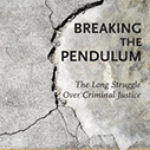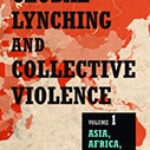The Rise Of Extreme Porn: Legal And Criminological Perspectives On Extreme Pornography In England And Wales

Authors: Alexandros K Antoniou and Dimitris Akrivos
Publisher: Cham: Palgrave Macmillan, 2017. 369p.
Reviewer: Clare McGlynn | March 2018
In 2008, a controversial new criminal offence was introduced in England & Wales that criminalised the possession of what is termed ‘extreme pornography’. This new offence meant that, for the first time, not only were producers and distributors of adult pornography targeted by the criminal law, but also those who downloaded and therefore ‘possessed’ such works. The legislation defined ‘extreme pornography’ to include images of bestiality, necrophilia, life-threatening injuries and where there was serious injury to the anus, breasts or genitals. Such a definition, though, did not cover rape pornography and so, in 2015, the law was further amended to include images of rape and non-consensual penetration.
Ten years on, debate still rages over the reach and effect of this legislation, and this new book by Alexandros Antoniou and Dimitris Akrivos provides some useful background, context and empirical data to help inform these discussions. Thus, for those wishing to understand the background to the adoption of the law, including the differing political positions, the campaigns launched to change the law (both in 2008 and 2015), and the detail of the legislation, chapters 1-5 will provide a great source of material. The focus of the work is on describing what happened and what the current law is, leaving it to others to develop the analytical frameworks from which to evaluate the law. At times, the book reads as if a PhD thesis. This can bring with it comprehensiveness, but at times a lack of analytical voice and, in places, references and links not updated.
The substance of the work comes in the later chapters where interesting data from police and prosecutors are revealed and discussed. In essence, this demonstrates what many assumed from varied press reports, namely that prosecutions and convictions for possessing bestiality images predominate, and that prosecutions are serendipitous, resulting from discoveries made while in the course of other investigations. The data also reveal the challenges facing prosecutors in determining the thresholds for prosecutions: for example, when are images ‘life-threatening’ or, perhaps more difficult, what constitutes ‘serious injury’.
Unfortunately, the dataset predates the change in the law in 2015 to include pornographic images of rape, as it includes only data from 2009-2014. Further research, therefore, would be very welcome and help to identify whether the upward trajectory in number of prosecutions continues and whether there are particular challenges in deploying the rape pornography provisions.
Overall, this book presents a detailed description of the law relating to extreme pornography in England & Wales. Due to the novelty of this legislative approach, when compared with most other jurisdictions, the work provides a useful introduction to the debates and controversies in the field. Further research will help elucidate the impacts of the change in the law to include rape pornography, as well as develop the conceptual and theoretical frameworks necessary to understand the role and place of this law in current debates relating to the prevalence of sexual harassment, sexual violence and the harms of pornography.
Clare McGlynn, Professor of Law, Durham University, UK


